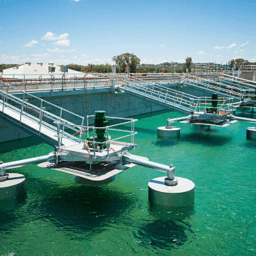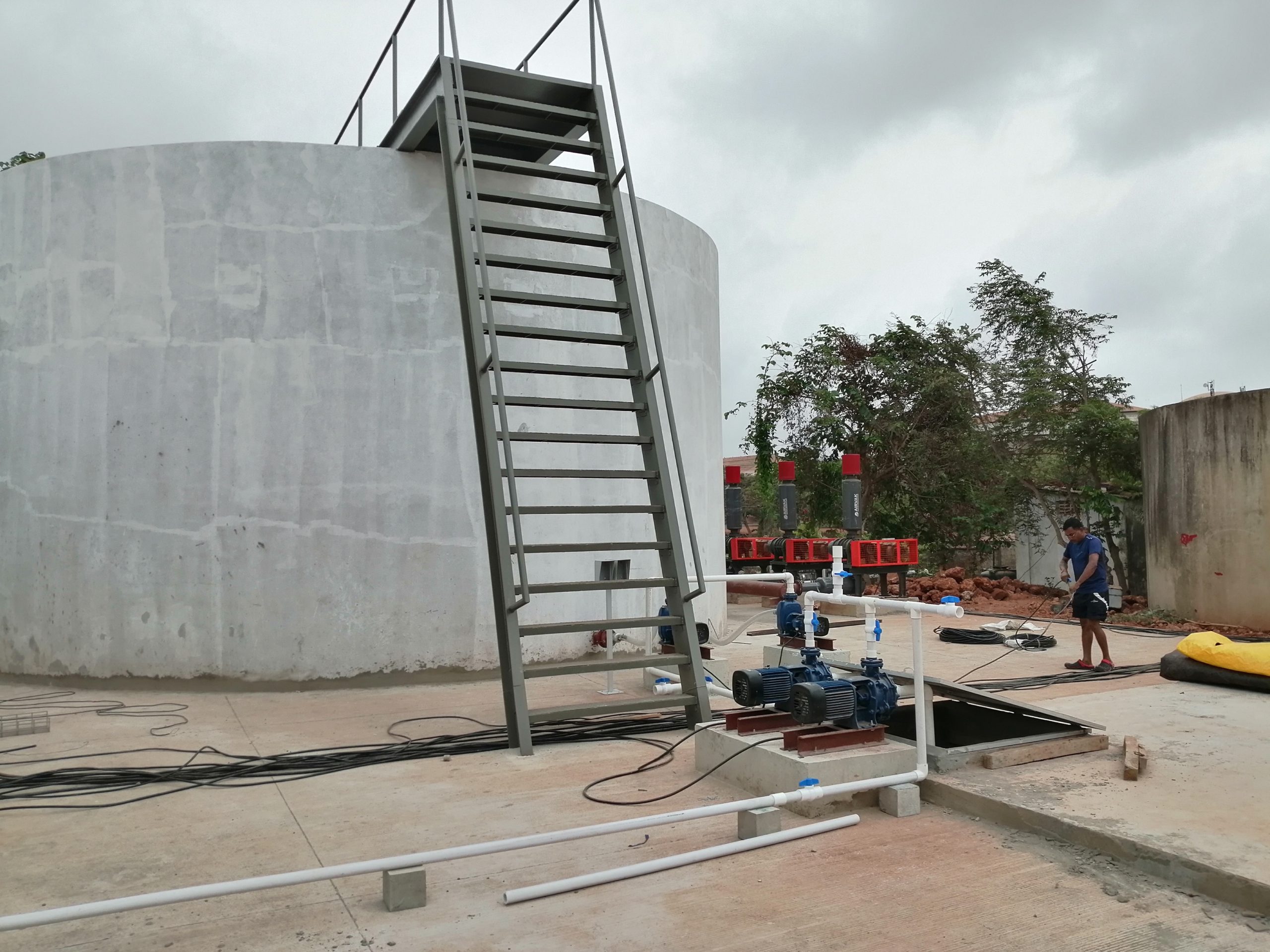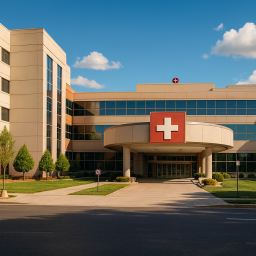
Hospitals are essential facilities dedicated to health, recovery, and wellness. However, they also generate large volumes of wastewater containing a mix of hazardous substances, including pharmaceuticals, pathogens, and various chemicals. If untreated, this hospital wastewater poses serious health risks to humans, animals, and ecosystems. An advanced sewage treatment plant (STP) specifically designed for hospitals addresses these challenges, ensuring safe wastewater discharge and reducing environmental impact.
Understanding Hospital Wastewater and the Need for Treatment

Hospital wastewater contains a unique blend of contaminants from multiple hospital departments—emergency rooms, laboratories, radiology units, patient wards, laundry services, and kitchens. This wastewater contains harmful pollutants that can seep into water supplies, soil, and ecosystems if left untreated. Key contaminants include:
- Pathogens and Bacteria: Including viruses and infectious agents that pose health risks.
- Pharmaceutical Residues: Antibiotics, hormones, and other drugs that can disrupt aquatic life.
- Radioactive Elements: From diagnostic and therapeutic equipment.
- Heavy Metals: Such as mercury and cadmium from medical devices and laboratory waste.
- Chemical Disinfectants: Used in high volumes across hospital facilities.
Given these risks, proper wastewater treatment is crucial for hospitals to ensure compliance with environmental regulations, maintain public health, and protect natural resources. Hospital sewage treatment plants are specially designed to tackle these unique pollutants, making them indispensable for any healthcare facility.
Types of Wastewater Produced in Hospitals and the Importance of Proper Treatment
Hospitals generate a wide range of wastewater, each containing unique contaminants that require specific treatment methods. Hospital wastewater treatment is critical for safeguarding both human health and the environment, as untreated wastewater can contain harmful pathogens, chemicals, and pharmaceuticals. Below are the primary types of wastewater produced in hospitals and why it’s important to treat them properly.
1. Wastewater from Medical Procedures
Hospital wastewater from medical procedures is often contaminated with bodily fluids, pathogens, and chemicals. This category of wastewater is referred to as infectious wastewater and requires specialized treatment to eliminate harmful microorganisms.
- Examples:
- Blood, urine, and fluids from medical procedures.
- Wastewater from diagnostic labs and operating rooms.
- Wastewater from sterilization equipment.
- Treatment Importance:
- Infectious wastewater can spread diseases if not properly treated.
- Proper hospital wastewater treatment ensures that pathogens are neutralized before discharge.
2. Pharmaceutical and Chemical Wastewater
Hospitals also produce wastewater that is contaminated with pharmaceuticals, including expired medications and chemical compounds. If not treated properly, these substances can harm both human health and aquatic ecosystems.
- Examples:
- Wastewater from pharmaceutical preparation areas.
- Discharge from chemotherapy treatments and expired drugs.
- Treatment Importance:
- Hospital wastewater treatment helps eliminate active pharmaceutical ingredients that can contribute to antibiotic resistance and disrupt aquatic life.
3. Wastewater from Cleaning Processes
Hospitals generate large volumes of wastewater from cleaning activities, which may include detergents, disinfectants, and other chemicals. This type of wastewater can be toxic if not adequately treated.
- Examples:
- Wastewater from cleaning floors, surfaces, and medical equipment.
- Discharge from laundry facilities used for cleaning linens and uniforms.
- Treatment Importance:
- Cleaning wastewater contains chemicals that can harm water sources if not treated.
- Hospital wastewater treatment processes are essential for breaking down these chemicals safely.
4. Sanitary and Domestic Wastewater
Hospitals also produce domestic wastewater from everyday human activities. This includes wastewater from toilets, sinks, and kitchens.
- Examples:
- Wastewater from staff and patient restrooms, kitchens, and washing facilities.
- Treatment Importance:
- While less hazardous than medical wastewater, sanitary wastewater still contains organic matter and detergents, which must be treated before discharge to avoid polluting local water bodies.
Why Proper Treatment of Hospital Wastewater Is Essential
Proper treatment of hospital wastewater is crucial for several reasons:
- Preventing Disease Spread: Hospital wastewater treatment prevents the spread of waterborne diseases such as cholera and hepatitis by eliminating pathogens.
- Protecting the Environment: Untreated pharmaceutical and chemical wastewater can contaminate rivers, lakes, and groundwater, affecting aquatic life. Effective hospital wastewater treatment ensures the safe removal of these harmful substances.
- Compliance with Regulations: Hospitals must comply with local and international regulations regarding wastewater discharge. Proper treatment ensures adherence to these standards and avoids fines.
- Sustainability and Public Health: Proper treatment contributes to sustainability by protecting local water sources and allowing the reuse of treated wastewater for non-potable purposes like irrigation.
Key Takeaways
- Hospital wastewater treatment is essential for managing wastewater from medical procedures, pharmaceuticals, cleaning, and domestic activities.
- Proper treatment prevents disease spread, protects the environment, and ensures compliance with regulations.
- Hospitals should invest in robust treatment solutions to manage wastewater effectively and sustainably.
The Role of an Advanced Sewage Treatment Plant (STP) in Hospitals
Advanced STPs for hospitals use a multi-stage approach to effectively treat and neutralize contaminants. The standard stages include:
Preliminary Treatment: The initial phase removes large debris and heavy solids, such as grit, using bar screens and grit chambers. This step protects downstream equipment from damage and prepares the wastewater for further treatment.
Primary Treatment: In this stage, wastewater enters a clarifier where physical separation of solids occurs. Heavier particles settle at the bottom as sludge, while oils and greases float to the top and are skimmed off. The partially treated wastewater then moves to the next stage.
Secondary Treatment: This biological process uses bacteria to break down organic matter. The wastewater is transferred to aeration tanks, where oxygen is supplied to support microbial activity. As microbes consume organic pollutants, they convert them into safer forms. Secondary clarifiers then separate microbial sludge, which is either recirculated for ongoing treatment or sent to sludge digestion tanks.
Tertiary (Advanced) Treatment: The final stage targets any remaining pollutants, including dissolved contaminants and pathogens. Various disinfection methods, such as chlorination, UV light, or ozone, are employed to eliminate pathogenic microorganisms. This step ensures that the treated water is safe for discharge or even non-potable reuse within the hospital.
Each stage in this treatment process is vital for achieving the high safety standards required for hospital wastewater, making advanced STPs an integral part of hospital infrastructure.
Benefits of Installing an Advanced STP in Hospitals
Public Health Protection: Effective treatment of hospital wastewater minimizes the risk of spreading infections through contaminated water sources. This is essential for safeguarding both patients and the community.
Environmental Conservation: By preventing harmful contaminants from reaching natural water bodies, hospital STPs contribute to preserving aquatic ecosystems and groundwater quality.
Regulatory Compliance: Hospitals are subject to stringent environmental laws concerning waste disposal. Installing an STP helps hospitals meet these legal requirements, avoiding potential fines and ensuring responsible waste management.
Water Reuse Opportunities: Treated water can be repurposed for non-potable uses, such as flushing toilets or landscaping irrigation. This reduces the demand for fresh water, promoting sustainability in resource management.
Enhanced Reputation and Community Trust: Hospitals committed to environmentally responsible practices gain the trust of their communities and demonstrate their dedication to public health and ecological welfare.
Why Hospitals Need Advanced STPs Over Conventional Options
Unlike conventional treatment plants, advanced STPs are tailored to address the unique contaminants found in hospital wastewater. These systems often incorporate state-of-the-art technologies, such as:
- Membrane Bioreactor (MBR): Combines biological treatment with membrane filtration for superior removal of contaminants.
- Sequential Batch Reactor (SBR): Treats wastewater in batches, providing flexibility and efficiency in contaminant removal.
- Moving Bed Biofilm Reactor (MBBR): Uses biofilm on plastic carriers for effective treatment of high-strength wastewater.
Advanced STPs also offer flexibility in plant size, making them suitable for hospitals of varying capacities. From small clinics to large multi-specialty hospitals, these plants can be customized to manage specific wastewater volumes and treatment needs effectively.
Capacity of Sewage Treatment Plants for Small vs. Large Hospitals
When selecting a sewage treatment plant for small hospitals, the capacity of the system is one of the most important factors to consider. The capacity determines how much wastewater the plant can process daily, which directly correlates to the size and number of hospital beds. Hospitals vary greatly in size, and understanding how the capacity of an STP differs for small and large hospitals is key to choosing the right solution.
For Small Hospitals (Up to 50 Beds)
Small hospitals typically have a lower volume of wastewater production due to fewer patients, staff, and administrative operations. A sewage treatment plant for small hospitals must be capable of processing wastewater generated from the hospital’s core functions, including patient care, staff use, and other daily activities.
- Capacity Range: Sewage treatment plants for small hospitals are generally sized to handle wastewater from 20 to 50 beds, typically ranging from 1,000 to 5,000 liters of wastewater per day.
- Compact Design: Small hospitals often face space limitations, so the STP needs to be compact yet efficient. The design of these plants is tailored to fit into smaller areas without sacrificing functionality, making them an ideal solution for hospitals with limited space for installation.
- Cost-Effective: A smaller STP is more cost-effective, both in terms of initial installation and ongoing maintenance. Because the capacity is designed to meet the wastewater needs of a smaller facility, the upfront cost is lower, and operating costs are more manageable. These cost savings are especially beneficial for small hospitals with limited budgets.
For Medium to Large Hospitals (50+ Beds)
Larger hospitals with 50 or more beds generate a significantly higher volume of wastewater. The complexity of their operations requires a more robust sewage treatment system that can handle the larger output from a higher number of patients, medical procedures, and administrative functions.
- Capacity Range: Sewage treatment plants for larger hospitals can range from 5,000 to 50,000 liters of wastewater per day, depending on the hospital’s size and the number of patients.
- Complexity: Larger STPs often incorporate multiple stages of treatment to ensure the treated water meets stringent environmental and health standards. These systems tend to be more complex, requiring advanced technologies to handle the increased load and to meet local regulatory requirements.
Why Size Matters: Tailoring the STP to Your Hospital’s Needs
It’s crucial to understand the capacity requirements for your STP to ensure that it functions optimally and remains energy-efficient. For small hospitals, having the right-sized plant ensures that resources are used efficiently, wastewater is treated effectively, and operating costs are kept under control.
Example for Small Hospitals:
For instance, a 30-bed hospital would typically need a plant capable of treating around 2,500 liters of wastewater per day. Even with such a small volume, the plant might still require advanced treatment processes, such as bio-filtration or membrane filtration, to maintain high standards of water quality with minimal maintenance. In some cases, automation and remote monitoring might be incorporated to further reduce the need for manual oversight.
By specifying bed capacity in relation to STP sizing, you make it easier for hospital administrators to choose the right sewage treatment plant. Matching the plant size to the specific needs of the hospital ensures efficiency, cost-effectiveness, and compliance with environmental regulations.
Comparison of Sewage Treatment Plant Capacity for Small and Large Hospitals
To further clarify, here is a table that compares the capacity of sewage treatment plants for small and large hospitals:
Hospital Size | Capacity Range (Liters per Day) | Treatment Process | Key Features |
Small Hospitals (Up to 50 Beds) | 1,000 to 5,000 liters | Basic to Advanced (Bio-filtration, Membrane Filtration) | Compact, Cost-Effective, Low Maintenance |
Medium to Large Hospitals (50+ Beds) | 5,000 to 50,000 liters | Advanced (Multi-stage Treatment) | Complex Systems, High Capacity, Meets Stricter Regulations |
Conclusion: The Critical Role of Advanced Sewage Treatment Plants in Hospitals
In today’s environmentally conscious world, hospitals must prioritize effective wastewater management. Advanced sewage treatment plants offer a powerful solution, ensuring that hazardous hospital wastewater is treated and neutralized before it reaches natural water bodies. Not only do these plants support environmental preservation, but they also play a vital role in safeguarding public health and fostering trust within communities.
An investment in an advanced STP for hospital is an investment in a hospital’s commitment to health—both within and beyond its walls. Whether for compliance, sustainability, or community welfare, advanced STPs are an essential asset for any hospital dedicated to responsible, modern healthcare.
















